Since we first launched Landline Creative Labs, I’ve been wanting to start a series of interviews with our tenants, asking what they’re up to, and, through them, trying to get a better sense as to the direction in which Ypsi’s creative energy may be flowing. Here, in our first installment, I talk with Juliet Hinely, who, not too long ago, moved back to Ypsilanti from San Francisco to put down roots and establish her audio production studio and begin an artist residency program.
MARK: First things first… Congratulations, I saw recently that Believed, the podcast that you produced for Michigan Public Radio about the Larry Nassar case, reached #1 on the iTunes charts. That’s incredible.
JULIET: Thank you so much! I feel incredibly lucky to have been part of the project. I was joking with someone the other day that all I had to do to work on a nationally recognized podcast was move back to small-town Michigan. But, seriously, all of my hats are perpetually off to the rest of the team on the show at Michigan Radio — Lindsey Smith and Kate Wells who reported and hosted the whole series, Sarah Hulett and Alison MacAdam who edited the story, Paulette Parker who rangeled SO much tape, and Jennifer Guerra who not only managed and perfected the entire production as Executive Producer, but also organized the distribution partnership with NPR. I have loved working with them, and I’ve learned so much.
MARK: I’m curious as to what effect it had on you to work on this particular project, given that it must have required you to immerse yourself in this material for so long, listening to the first-hand accounts of sexual abuse, and contemplating the fact that these young women, when they tried to call attention to what was happening to them, weren’t believed. I have to believe that it took some kind of toll on you, and changed your worldview to some extent, right? Or are you able to somehow separate yourself from the material?
JULIET: So, first, I have to recognize that I came to the project from a point of privilege as someone who has not been sexually assaulted. So, in that way, I’m able to have some distance from the material. But, with that considered, yes, it was an extremely heavy project to work on. This case, and the stories and experiences of all of these women reveal so many systems, formal and social, that are in place to discredit women, victims, and survivors. It’s really depressing. Especially given that we’re living at a time when so much national policy is being written to reinforce these same kind of power dynamics. BUT — this story also reminds me daily that there are heroes among us. This whole case was set off by just one woman, named Rachel Denhollander, speaking out to the press after reading a news article about abusive practices in USAG at large. It wasn’t simple, and it was a very long and arduous process, but she was determined for justice — for herself, and for the hundreds of other women and girls who also suffered Larry Nassar’s abuse. And she was instrumental in making it happen.
The immense weight of the story really hit me when I was working on the final episode. Without revealing any spoilers, the final episode culminates in the courtroom when Judge Rosemarie Aquilina sentences Nassar to life in prison. Listening to Judge Aquilina’s deliberation, and the way she conducted the whole trial, it really hit me SO HARD how important local and regional elections are. Judge Aquilina is a regional circuit court judge. She isn’t a supreme court justice, or a governor, or a president. Yet, because Larry’s charges were based in her jurisdiction, in central Michigan, she had the power to decide not only Larry’s fate, but also how the trial would be run. And she chose to give every survivor who wanted to a chance to say their piece. It’s chilling to me to think about how differently that court case could have gone had, and I’m going to make some presumptions here, an old, conservative, white guy had been the circuit court judge.
MARK: Speaking of judges, sexual assault, and old, white men, you must have been working on this as the Kavanaugh hearings were taking place, and Dr. Christine Blasey Ford was giving testimony before the Senate Judiciary Committee, and being attacked for it. I’m curious as to how, if at all, that may have perhaps influenced your decisions, or those of people on your team.
JULIET: Oh, man. Yes. I was at Michigan Radio the day of the hearing, and I think they aired the whole thing. And, at the station, you can hear whatever’s on air throughout the entire building, so there was no escaping it. It was so tremendously distressing to listen to, and we were in the thick of production at that point. It absolutely reaffirmed why were making Believed.
MARK: How did this podcast come about?
JULIET: I think the podcast grew out of the fact that the story, no matter how people approached it, just kept being too big for a radio special. A 10-minute, or 30-minute, or one-hour special just couldn’t do it justice. The story is so much more complex than, “Larry Nassar is a monster, and he went to jail,” but that’s largely what the story had been reduced to by the time it reached a national audience. And Kate Wells, who had been reporting all the various developments in the story since it broke in 2016, noticed a great disparity between how complex, and tangled, and long the actual story was, and how quickly it moved through the news cycle. So, from the outset, the team at Michigan Radio knew they needed something that went deep. Not only that, though. There was also a sense that it needed to resonate with listeners at a personal level. Given how extreme everything about this case is, listeners, we felt, might be inclined to distance themselves from it, thinking that something like this couldn’t possibly happen to them. And, for that reason, we wanted to go beyond the fact that, yes, many of his victims were Olympians, but most of the people involved were just regular people. We wanted people to understand that this didn’t just happen, but it could have happened to people that they know. The victims literally could have been your neighbors, or even you. And Kate, and Lindsey Smith, the other reporter on the series, felt that was so critical for people to understand. Because, really, that’s the only way the power dynamics around reports of sexual assault are ever going to change.
[The Believed Team at Michigan Radio. Left to Right: Jen Guerra, Lindsey Smith, Kate Wells, Zoe Clark, Sarah Huelett, and Juliet Hinely. The photo was taken on Hinely’s last day working on the project, and she’s wearing every visitor badge that she’d been issued over the course of production.]
MARK: And how did you come to be involved with Michigan Radio?
JULIET: This was my first project with Michigan Radio, and I have Jennifer Guerra to thank entirely for being part of it. She was the Executive Producer on Believed, and she ran the whole project. We met-up last winter to talk about podcasting, after meeting through a local radio producer listserv that we both belong to. She was a Knight-Wallace fellow at the time, but has been producing amazing public radio work forever. When things got rolling with Believed over the summer, she reached out. And the timing was so serendipitous because it was one of those #freelancelife things where I had just wrapped another project earlier than I thought that I would, and had availability.
MARK: Do you anticipate that, with the success of Believed, Michigan Radio may be interested in doing more in the way of podcasts?
JULIET: I hope so! I’m just a freelancer, so I’m not privy to the big programming decisions.
MARK: Before we move on, I’m curious to know if there were any editorial decisions that you and the team struggled with, like, for instance, whether or not you’d reach out to Nassar for a statement…
JULIET: I think, in the early stages of the project, they did reach out to Larry Nassar, and he didn’t respond, or said he would not be part of it. That happened before I came on board though, so I’m not certain. The biggest struggle I witnessed was wasn’t so much a struggle just a really big task and that was just really wanting to do right by the survivors… making sure the survivors were always at the center, making sure they were guiding the story. Kate and Lindsey and Sarah were so careful with every turn of phrase and every set up of every piece of tape.
MARK: OK, now let’s talk about you… As I recall, you’re a University of Michigan grad, right? Were you from Michigan originally?
JULIET: I’m not from here originally. I grew up in Lexington, Virginia, which is a small town in the mountains of southwest Virginia. I moved to Michigan in 2011 to go to grad school at UM, and that was also when I first moved to Ypsilanti.
[Hinely participating in a preschool Halloween parade through downtown Lexington, in 1988.]
MARK: What was it like growing up in Lexington, Virginia? I’ve never been, but, just from poking around a little bit online, it looks like a pretty idyllic little town, at least on the surface… Having watched enough David Lynch in my life, I alway have to end sentences like that with, “at least on the surface.”
JULIET: On the surface, you’re right. It is very idyllic! It’s super picturesque, quaint, charming, etcetera, etcetera, etcetera. But it’s also built on Confederate history, and still super segregated. As a kid, I didn’t realize any of that, and it felt like a great place to grow up. There was just one elementary school, one middle school, and one high school for the whole town, so everybody went to school together K-12, and everybody knew everybody. There was one community sports league so everybody played together. The epicenter of downtown was the public library, and there was a family-run ice cream parlor with bulletin boards full of polaroids of all the kids from town eating ice cream there. Sidenote, the ice cream parlor is still there, and now run by different people, but they kept all the old photos up, and continue to add new ones.
[The original bulletin board at the Sweet Things Ice Cream Shoppe in Lexington.]
MARK: Lexington, I should add, is also home to the Red Hen, the restaurant that famously refused to serve Trump administration spokesperson Sarah Huckabee Sanders, in addition to being the place where Confederate leaders Robert E. Lee and Thomas “Stonewall” Jackson are buried… I’m kind of curious as to the extent the Confederate presence still looms. Could you perhaps say a little more about that?
JULIET: Well, it does loom. Lexington, being the grave site of both Lee and Jackson, as you just mentioned, is a sort of pilgrimage site for Confederate sympathizers, and Civil War history buffs. There are statues of Confederate generals. There are historic reenactments every year. The city of Lexington, which is a blue-ish dot in the middle of a red county, in a red portion of the state, has made some moves to distance itself from its Confederate image by doing things like passing a “flag ordinance” ruling that only American, Virginia, or Lexington City flags may be flown in town. In other words, ruling that Confederate flags may not be flown in town. But that brought rowdy visits from a group that called themselves “The Flaggers,” who would march up and down Main Street waving dozens of confederate flags. That doesn’t happen frequently or anything, but it has happened.
MARK: It’s good to know that the people of Lexington are beginning to coalesce around the idea of change, or at least accept the inevitability of it.
JULIET: Well, somewhat. But yes, there are heartening examples of change happening. The church I grew up going to, for example, was called Robert E. Lee Episcopal Church. It was one of those countless buildings in the south renamed for Confederate generals during Jim Crow. I think very few people ever thought of it that way in modern day though because EVERYTHING is named after the Civil War in Lexington, and it is on the campus of college that also shares his name. However, after Dylan Roof’s white supremacist murder spree at the church in Charleston, the vestry of the church voted to change the name of the church, but passing it came up short by one vote. After the Unite The Right Rally in nearby Charlottesville about a year later, the vestry voted again, and restored the church to its original name of Grace Episcopal. It took two tries, but the right thing was done in the end. Words and names are important. They can signal a lot. Of course, there were people vocally up in arms about this too.
And, yes, the Red Hen incident, or “Red Hen-gate” as I’ve heard people call it, did happen in little Lexington as well. I’m proud of Stephanie, the owner of the Red Hen, for doing what she did, and for saying that this is a time in our history when our actions speak loudly, and we have to do uncomfortable things to stand up for what is right. And, no, she did not go running through the streets, screaming at Sarah Sanders, as far-right media reported. And, yes, she is part of my mom’s knitting group, which I thought you might ask too.
[Lexington’s Main Street in September 2016.]
MARK: You’re getting ahead of yourself. I was going to start the familial arts and crafts portion of the interview by asking about your great-grandfather’s whittling. As you brought it up, though, let’s jump forward to your mother’s knitting. What’s she working on right now?
JULIET: Well, not to be a downer, but she isn’t working on much these days, as she contracted Lyme Disease last summer, and it’s slowed her down in all aspects considerably. She was here for Thanksgiving, though, and was working on a pair of socks for someone’s Christmas gift, so that was encouraging to see. She’s a true master of the craft. She writes and designs her own patterns, dyes her own yarns. She’s been a knitter since she was 7!
MARK: Oh, I’m so sorry to hear that… about the Lyme Disease, not that she dyes her own yarn… Linette and I ended up not having the time this summer, but our plan was to drive as far as Maine with the kids, as none of us had ever been there before. When we were making plans, one of the big “cons” on our list of pros and cons was Lyme Disease. Linette isn’t a terrible worrier by nature, but she was convinced that, if we went hiking in Maine, there’d be a pretty good chance that one of us would contract it. Now, I suspect, she’ll worry about Virginia too. Do you know how your mother contracted it?
JULIET: She got it at a knitting retreat! Her knitting circle rents a cabin once or twice a year, and they all go and knit in the woods, and read books and it sounds just lovely really. But she is as certain as she can be that she got bitten when she was there. They went for walks in the woods and the property had long grass, which deer ticks thrive in, and she first had symptoms shortly after that trip.
MARK: Damn, who would have thought that knitting could be so dangerous. I hope you’re mother’s health continues to improve… As we didn’t have the time to go to Maine, the family and I drove to Gettysburg for the first time. [We also made stops in Philadelphia and Pittsburgh.] It was interesting, and I’m glad that we did it, as I think it’s important to acknowledge the ugliness of American history, especially at a time like right now, when the prospect of civil war, to be honest, doesn’t really seem like a complete impossibility, but I don’t think I could live there. And it’s not just the t-shirt shops selling Confederate flags and the like. It’s hard to articulate, but there’s a kind of cultural weight, or a denseness of history that one has to move through.
JULIET: For me it has a lot to do with facing the fact that a lot hasn’t changed, and that, as white people, we’re responsible and can’t distance ourselves from that history, even though we’re embarrassed by it. To me it is all a reminder that white people have so much work to do to undo all of the injustice, and un-normalize all of the racism that white people have perpetrated for so long. It is really overwhelming, but it’s like the cost of privilege. I’d rather confront racist relatives than try to survive a civil war.
MARK: Speaking of civil war, Donald Trump just said a few days ago that people would “revolt” if he were impeached… I’m curious, as a professional storyteller, if you have any thoughts on today’s media landscape, and the role it played in bringing us to this point in American history. I guess what I’m getting at is that, with all the good that came from the internet, and the recent explosion that we’ve seen in media alternatives, there’s also a down side, right? We’re no longer all still watching the same three networks, and talking about the same things around the office water cooler… There’s not really a shared reality anymore…
JULIET: It makes it really hard to argue with people, doesn’t it?! I say that kind of jokingly but I also mean it — it is virtually impossible to talk with people about something when your notions of the reality of that thing are completely different. Which I’m afraid might be part of the point. The more people yelling, the harder it is to hear anything. The current president certainly uses that tactic. And Far-Alt media, if that can be a category to encompass all extreme and truth-stretching media across the liberal-conservative spectrum, allows people to really dig their heels in and feel so righteous about it. And bask in the echo chamber of their own creation. That isn’t helpful regardless of where you stand on any particular issue. It is really, really distressing.
MARK: What’s your first memory?
JULIET: My first memory is actually really vivid! It is of big red tomatoes ripening in the sun on a blue tile floor. That memory resurfaced one day in middle school art class when we were assigned to “draw a memory.” I remember that evening at dinner I asked my mom, “Did we ever go somewhere with a blue tile floor, where there were tomatoes lined up on the floor in the sun?” And she laughed in this way that told me she was really surprised, and she said, “Yes! It was at your Uncle Drayton’s parents’ beach house on Edisto, and you were 17 months old!” My Uncle Drayton was not my actual uncle, but one of my dad’s best friends from way back. He was an artist, and would always send me really good art supplies for my birthday when I was a kid. He died from diabetes complications a few years ago, but I remember him frequently as someone who helped make me an artist and a creative person. I have actually revisited that image of the tomatoes on the blue tiles and it is something I draw when I’m trying to think out new ideas.
[Portrait of the artist at about 3, in Lexington, Virginia.]
MARK: When did you know that you wanted to be an artist?
JULIET: I can’t remember a specific incident or moment of knowing. I’ve really identified as an artist for as long as I can remember, ever since I was a little kid. In that way, I guess I’ve always felt like I was going to be in artist, of some sort anyway. My dad was a photographer, and my mom was a creative renaissance woman with various jobs along the way, and they always seemed like “real grownups” to me, so I could picture it for myself eventually too. Looking back on it as an adult, I can see that my dad worked ALL the time, and took a “golden handcuffs” day job at the local college that would pay for our college tuition. He also traded his photography work for our music lessons and dance classes. And my mom was the master of a thrifty budget. So, they made it work, and that was normal to me.
I think one of my most formative experiences towards being an artist, though, was in highschool, when I got the chance to go to the Virginia Governor’s School for the Visual and Performing Arts for the summer between junior and senior years. Governor’s School was like a pre-college program. You had to audition, and it was hosted on a college campus, and we got to stay in the dorms, and there were students from all over the state. It was one of those experiences where you could really start to picture life after high school, and it was exhilarating! I went for visual art, and I got to spend the whole summer learning printmaking, building sculpture, and learning all sorts of art history that wasn’t covered in our normal high school art classes. Going to Governor’s School was definitely the experience that solidified for me that I wanted to go to art school for college. It is also the reason I worked at a similar program in New York state called NYSSSA for 5 years during and after college.
MARK: It really makes you wonder where we might be in a few generations, as public school budgets are cut, and school arts programs continue to bear the brunt of that. I don’t want to equate artists and insects, but I think it’s kind of like the mass die-off that we’re seeing in insects now, and the unintended consequences that are sure to happen as a result. I haven’t seen any data about our having fewer art majors entering college, so hopefully I’m wrong about this, but it seems likely to me that fewer art programs in the K-12 curriculum will translate to fewer artists, and, in turn, I have to imagine that society will suffer. I mean, artists play a significant role as pollinators… if we continue to push the insect analogy.
JULIET: Oh, analogize away. I love a good analogy. And I’d say I’m more worried about art being cut in K-12 than seeing fewer art majors in colleges because I don’t think you need to go to art school to be an artist, or even need to go to college to be an artist necessarily. But that’s not really your point. Yes, it’s like a domino effect. Giving kids opportunities to be creative and learn what being creative is and discover that they have lots of good ideas about all sorts of things is vital to growing smart and confident people who can innovate whatever line of work they go into, whether as artists or engineers or cooks or civil servants. Society won’t just suffer a lack of artists from cutting arts programs, it will suffer a lack of innovation across industry and culture.
[Hinely working on Believed at Michigan Radio, Fall 2018.]
MARK: So, how did you get started in audio production? Did that happen in you undergrad program, or later?
JULIET: So, my background is actually in visual art, fiber arts and textiles to be exact, and I got started in audio when I wanted the things I was making to literally tell a story. My creative interests have always revolved around the stories and histories embedded in particular places. Why places are the way there are, why and how they’ve changed over time, and what they mean to different people. So much of my art-making process was involving interviewing people, and I loved that process. I loved the way hearing someone’s voice tell you something could tell you even more than just the words they were saying. Hearing someone tell a story was really such a visual thing. Also, I was often interviewing people in the places they were talking about, and I loved how the power of the story was intensified by hearing it in the real space where it happened. Which led me to thinking about audio tours. I wanted to create an experience that would let people hear stories in the places where they happened, and hopefully create the experience of feeling and seeing history layered on itself. So I made an audio tour project, and it was terrible. Technically, and editorially, it was just awful. But, hey, it was a huge learning opportunity. And it was really fun. And it definitely made me want to get good at it! So, when I was applying to grad schools, I applied with audio and installation art as my interests, got into the Stamps School of Art and Design at the University of Michigan, and got paired up with the incredible Stephanie Rowden as my advising professor. She’s an audio artist and professor there, and working with her absolutely changed everything for me. She introduced me to the whole world of creative narrative audio.
MARK: I know you said you weren’t happy with it, but, as I’ve often thought about attempting an audio tour of Ypsilanti, I’d like to ask you more about this first project of yours. Where did you do it? And did it ever go live, if even for a short while?
JULIET: I made that audio tour in Jacksonville, Florida, where I was living at the time. And it did go live for a few months. It was so low-tech it makes me laugh. You had to go to a Tumblr I made, and then link to a website a friend of mine had that could actually host downloadable audio content, and then you had to download each individual audio file. And it was 25 stories about 25 places by 25 people from all over Jacksonville, so there was a lot to download. Not to mention that Jacksonville is one of the largest cities by landmass and square mileage in the United States, so it was a huge ask of the listener in every way. But we did get on the front page of the Jacksonville newspaper the day it launched, so that felt awesome at the time. I still have cringe attacks, though, that someone from Jacksonville Public Radio or something tried out the tour and was like, “What the hell is this garbage?” All I can say is, you gotta start somewhere.
[Getting good press on the front page of the Jacksonville Times Union in the spring of 2011.]
MARK: Can you tell us about one of the stories?
JULIET: Half of them weren’t event stories. They were people just talking! I was just barely beginning to learn how to guide people into talking in stories. My experience interviewing people up to that point had mostly been to learn information, rather than collect stories that could be seamlessly woven together with just their own voice. Not to even mention getting them to relate what they were saying to the actual physical location. It was so bad. But a few people I featured seemed to understand the project better than me fortunately. One of the stops on the tour was a specific parking meter near Hemming Plaza in downtown Jacksonville where a woman realized that her car had been broken into, and her laptop with her life’s work and novel on it had been stolen. And, of course, none of it was backed up anywhere. So, after a grieving period, she had to start over and ended up writing a totally different book that was way better, that she would never have conceived otherwise. So her story was about how that parking meter is her personal monument to fate and flexibility.
MARK: And what was your first podcast?
JULIET: The first podcast I ever worked on was a show called Wedlock. It was a six-episode series out of Audible, featuring husband and wife comedians Kurt Braunohler and Lauren Cook, “exploring the comedy and complexity of long term relationships.” It was one of the shows Audible made early on, when they began producing original podcasts. And, because it was one of the early shows made for their podcast offering, we could try a lot of things out, and that made it really fun. Each episode had an interview segment with “an unlikely relationship expert” like a hostage negotiator, or a furry, or a cam girl. And each episode had an field segment where we’d go out and record the two hosts doing something together, like going to fight therapy class where they’d wrestle each other, or going to a nudist resort.
MARK: And, for that one, did you travel with the hosts and do the field recording, or was your job to stay in the office and work with the tape as it was shipped back from the nudist resort? I really have no idea whatsoever how the business of podcasting works, how many people are involved when you’re working on projects for larger companies like Audible, etc.
JULIET: I traveled with them to produce some of the segments, but not all. Regrettably, I did not get to go to the nudist resort! I did have to call a billion nudist resorts and pitch them on the idea, though, to find one that would allow us to come and record. Those were funny phone calls. Not to mention the search history on my work computer while I was researching! And, oftentimes, the person I’d actually need to talk to was not at the front desk, so I was playing phone tag with several nudist resort owners for a few weeks, which is not something I ever thought I’d say. And half the time I had to also explain what a podcast was.
As far as how production teams are structured, there isn’t really an industry standard yet because the industry is still relatively young. Every show I’ve worked on, or place I’ve worked, has had a different team structure. Also, with podcast production, team size varies a lot too. I’ve worked on two-person teams and ten-person teams. It all depends on the resources of who is making the show. But most shows will have at least a producer and editor in addition to the subject or host. But not always. Sometimes one person does all of those things. And sometimes there will be a whole hierarchy of editors and producers. Some production houses mirror television production structures in that way. There is a lot of overlap in process but there isn’t the same kind of industry infrastructure behind it. Not yet anyway. I imagine this is sort of like the early days of TV.
MARK: Would I be right to assume that you’re still doing your own audio work, when you’re producing podcasts for others? If so, what are you working on now?
JULIET: I am! It has been on the back burner lately, but I’m slowly working on an audio piece with my Uncle Dave who is in his first year of recovery from alcohol and drug addiction. He’s been living in the Ypsi-Arbor area for the better part of 25 years, and now he is rebuilding his life here in the same place where he downspiraled. So it’s sort of about that — how do you build a whole new life in the same old place.
MARK: It sounds great… Speaking of Ypsi, let’s talk about how you came to be living here. Did you know anything about Ypsilanti before move here in 2011? Did you visit to check it out before deciding to live here?
JULIET: No! The first time I visited Ypsilanti was to find an apartment here! My Uncle Dave, who I’m making that audio piece with, who is really my husband’s uncle, but also my uncle too now, and also one of our closest friends, lived here at the time, and basically said, “Don’t even bother looking for a place in Ann Arbor. Ypsi is where it’s at.” So, we did as he suggested, and found an awesome apartment on Pearl Street, where we lived for about 5 years.
MARK: What was your uncle-in-law doing here in Ypsi?
JULIET: He had been living here for the better part of 20 years bouncing back and forth between Ypsi and Ann Arbor. He was the full-time window dresser at Selo Shevel in downtown Ann Arbor at the time, and doing stage design for a bunch of club nights and variety shows and drag shows around Ypsi. When we first moved here we had a lot of fun helping him with that stuff.
MARK: OK, yes, back to you… So you lived here while you were in grad school, and then you moved away for a while, right? What were you doing during those years? And what was it that brought you back to Ypsi?
JULIET: Yes, we moved away to California for a few years. I got my first official job in audio production after grad school at a startup in San Francisco that made these really incredible immersive gps-activated audio tours. It started as a six-month project gig, so I moved out there by myself, while Narooz held down the fort in Ypsilanti. When I ended up getting hired on full time, Narooz moved out there with me. We lived in an awesome old house in the far reaches of northwest Berkeley. It was beautiful, and we had the best neighbors, and cool jobs, but, the longer we lived there, the more clear it became that it was simply not sustainable for us to live there long term. We weren’t looking at California as a “forever” move when we moved there, but we didn’t have a timeline attached to it either. When we really came to terms with the fact that we would both have to dramatically change careers to really be able to keep up with cost of living out there, we started crafting our exit strategy. And when we asked ourselves, “OK, so where next?”, Ypsilanti was the first answer for both of us.
MARK: Narooz, for people that might not have had the pleasure, is your husband… As it was his uncle who told you about Ypsi when you came out here for grad school, would I be right to assume that you met Narooz wherever you got your undergrad degree?
JULIET: Narooz and I actually met after college, but not long after. We met totally by chance, on the sidewalk on West King Street, at the St. Augustine Art Walk, on the Friday after Obama won the election! We were both living in Florida at the time — he lived in Jacksonville, because he had gone to school at University of North Florida, and I lived in St. Augustine, because I moved there after college to try to just get a job and be an artist.
MARK: OK, this interests me… I know you mentioned having done a project in Jacksonville earlier, but I didn’t know that you actually moved to Florida voluntarily…
JULIET: [Laughs] I know… Yes, I did. My dad grew up there, and I grew up going to the beach there as a kid, and the world of tourist attractions there always fascinated me. So, after college, when I had no concrete life plans besides, “be an artist,” and I was making art about tourist attractions and local history, I figured I might as well move to the place that had the tourist attractions and local history that fascinated me the most. So I moved to St. Augustine to do research at the historical society there about The Fountain of Youth. And I put my art degree to work with a minimum wage job at the Old Tyme Photo Studio photographing drunk tourists as cowboys and saloon ladies.
[Self-portrait taken at Old Tyme Photo, in St. Augustine, Florida, September
2008.]
MARK: That’s great! If you were just about three decades years older, you could have taken a photo of me, with my sister, mom and dad, while visiting St. Augustine back in about ‘76. I swear I’ve seen a fake daguerreotype around my parents’ house that was taken in St. Augustine, or somewhere between there and Weeki Wachee, that summer… What, if you don’t mind me asking, came of your research on the Fountain of Youth?
JULIET: The Weeki Wachee Mermaids! Yes! I have such a love/hate relationship with Florida but that old tourist trap crap gets me everytime. And the Fountain of Youth is a prime example! I love the impossibility of that place. The research I did there mostly became background research for an art installation I exhibited in St. Augustine later that year that was sort of a tribute to a long-running souvenir shop in the town.
[From the installation “From Florida, With Love” in St. Augustine, Florida. Materials: vintage back stock postcards. Gallery at the Green Home Store, West King Street, Spring 2009.]
MARK: OK, I’m going to take us on a weird tangent here, if that’s OK… Not too long ago, I was listening to Gilbert Gottfried’s Amazing Colossal Podcast, and he and his co-host, Frank Santopadre, were interviewing veteran comedy writer Ron Friedman, who, among his many credits, wrote for Lucille Ball. Well, they were talking about a story that Lucy had told him once, about how she and Desi Arnaz, her husband, I Love Lucy co-star and co-founder of Desilu Productions, had hired Orson Welles back in 1958 to write a screenplay based on a short story by John Collier about the fountain of youth, for an anthology series they were hoping to sell to a network. The story, as conveyed by Friedman, was absolutely incredible. Welles moved into one of Lucy and Desi’s homes, charged thousands of dollars in food and alcohol to the accounts of his hosts, and then simply refused to write anything. This, according to Friedman, went on for months, until Desi, in a drunken rage, drove from Hollywood to Palm Springs in the middle of night and confronted Welles at gunpoint. But here’s what I wanted to pass along. Welles did eventually complete the script, and the produced piece, called The Fountain of Youth, can be seen on YouTube. I don’t know what this will mean to you, but it’s one of the more rewarding rabbit holes I’ve gone down this past year, and I felt compelled to share.
JULIET: And I’ll be watching that film on Youtube in its entirety tonight.
MARK: Back to your spouse…. Would you like to mention the Naroozmobile, or whatever it is that you call that little, three-wheeled vehicle of his?
JULIET: [Laughs.] Sure! He’s going to love it that you called it the Naroozmobile. The vehicle you are referencing is called The Lil’ Truck. It is an old 1960’s postal truck that he restored from “boot to bonnet” to be a multi-use food truck/coffee cart/spectacle vehicle. Before we had any idea we’d be moving to California, he did a Kickstarter here in Ypsi to fund most of the restoration. Narooz is such a fantastically roll-with-the-flow guy that, when we moved to California and brought the Lil Truck with us and found out that it was literally too “lil” by California food laws to be a food truck, he made it into a food truck for dogs.
[A very happy customer at The Lil Truck treat truck, Oakland, California, 2016.]
MARK: So what’s he doing right now with this little vehicle of his? While I like the Naroozmobile, I think that Ypsi Ypsi Bang Bang might be a more fitting name, given its ability to magically transform like Chitty Chitty Bang Bang. Or, of course, The Lil’ Truck is also awesome. I’m not lobbying that you officially change the name.
JULIET: Oh, Ypsi Ypsi Bang Bang is goooood. The Lil’ Ypsi Ypsi Bang Bang is currently in our driveway awaiting Narooz being able to do some work to the brakes so it can be driveable again. It drives now, it just can’t stop. I think his next iteration is to turn it into an Egyptian/Turkish coffee truck and to start with some once-monthly pop-ups this spring and summer. He is always having a million ideas for that thing but his full time job and slate of other hobbies and side hustles keep him very busy. With the new year though we reassessed what we want to focus more energy to this year and Lil Truck was at the top of his list.
MARK: Going back a bit, you said that when you and Narooz asked yourselves where you wanted to settle down, the answer for both of you was Ypsilanti. I’m curious as to why that was? How did Ypsi come to be at the top of the list? I’m not questioning the decision, as Linette and I had a very similar conversation in Los Angeles in 1999 that led to our re-return to Ypsi [we’d already left once for Atlanta and returned], but I’m curious as to why both you and Narooz agreed that this was the right place for you. What was it about Ypsi that made it seem like the kind of place you could put down roots?
JULIET: When we moved to Ypsilanti the first time we loved it because it felt both very familiar, but also unlike any other town we’d lived in. And even that is kind of hard to explain. In a lot of ways, Ypsilanti looked like what I expected a mid-western college and industrial town to look like. But it also had curious things like an obsession with its phallic water tower, the Dreamland Theater, someone who walked their pet pig at Frog Island Park, a seemingly high occurrence of drag shows, the art park at the Water Street lot, Shadow Art Fair, or even just the patio at Ugly Mug. You know, these things that were mundane and extraordinary at the same time. And really just made cool by the people who were there. Who were also friendly! I think that is probably the thing I loved and love most about Ypsilanti and the number one reason we came back — Ypsilanti feels permeable. It is a place where you can make things happen and it is a place where it’s not hard to connect with people who can help you make things happen together. I’m thinking of a million examples but the first one I experienced was the first social art event thing we went to shortly after moving here, and meeting Kayj who was running the event, and how she invited us to be part of a bunch of other events she was working on. And, related, another huge factor that brought us back to Ypsilanti was our friend family here. In the 4 or 5 years that we lived here the first time we made incredible friends and a lot of them still live here. And they still live here for the other reason we felt like we could put down roots here: it is pretty affordable.
MARK: I should probably know this, but how did you come to be in Landline? At first, you were kind of sharing some desk space with filmmaker Donald Harrison in the 7 Cylinders Studio office, and now you have a more of a space of your own, but how did you first come to know about the space? Was it through Donald, or did you reach out to me through the website, and did I introduce you to Donald? I honestly can’t remember.
JULIET: I really can’t remember how I first learned of Landline! I think it was through an online news article or something, when Landline was still under construction. I did email you last winter when we moved back, though, to inquire about space, and to get on the waitlist. And, then, while I was waiting for a space to open up, Donald, who I can’t remember how I met, offered to “sublease” some table space in his studio to me, so I literally, and figuratively, started coming in the side door that way.
MARK: Well, I think I’ve said this before, but we’re super happy to have you. When we were planning the space, I really wanted someone in the mix who did podcasts… More importantly, though, you’re just a great neighbor. You even baked a cake for the first anniversary of Landline!
JULIET: Thank you! I am SO happy to be here. It is incredible to have really nice dedicated space like this. I’ve always loved building forts and clubhouses, and Landline has a little bit of that feel, which I think actually comes from the community of the building, and just feeling so happy to be in a place with a bunch of people all working on what they love doing. For anyone reading: the physical structure of the building is totally solid, not made of blankets or palette wood. And, as someone who loves layered history, I love how you’ve incorporated the history of the building as telephone company headquarters into the design of the space. And, yes, I love the building so much that I replicated it in cake form for the Landline anniversary party.
MARK: OK, so tell me about The Listen Inn… What is it? And where did the idea come from?
JULIET: The Listen Inn is both my studio and an artist residency program I’m building. It is an umbrella title over the many ways that I do projects with people, both inside and outside of my freelance work. I started the residency aspect of The Listen Inn for two main reasons. One, because I love helping people make the best, most ambitious version of their work and I love introducing people to the process and creative possibilities of audio. And two, I wanted to create and formalize a way to do that outside of the commerce of my freelance work. AKA for free. I have always loved the community and experience of artist residencies and there are not a lot of audio-specific residencies out there so I wanted to start building one.
MARK: Have you had you first residency?
JULIET: I have! I started The Listen Inn about a year ago, back in January 2018, when we had a much bigger apartment, and were able to invite people to come and stay at our house for a week and use our studio to concentrate on an audio/radio/pod project, and I would support them with meals at our house and a place to stay, as well as edits/feedback/brainstorming and a public event to share their work. My first resident was Avery Truffelman from 99% Invisible who came to work on her Articles of Interest series. Shortly after Avery’s residency we moved into a smaller apartment, and I had to morph The Listen Inn into a “low residency program” where I do the same kind of work, but with local people and producers here in Michigan at my studio — sometimes on whole series and big projects, and sometimes on little one-off projects. At first I saw our smaller apartment as a huge hindrance to The Listen Inn but it has actually turned out to be the greatest adjustment because the current low residency version has allowed me to work with more people sooner, and try a bunch of different residency formats. Right now, I’m working with a woman who is a local writer here in Ypsi on her first audio project which is an 8-part audio drama. It’s a huge project for a first project but I’m so excited for that. I’m also working long-distance right now with a producer in DC to help him with an episode for his podcast series that breaks the format he usually produces in.
MARK: This interview kind of confuses me. I started it as part of a new Landline series, but there’s a lot of overlap with a few other interview projects I’ve got going right now. For instance, I think this should also be in my Ypsi Immigration Interview series, even though you’ve already been back for over a year, and already lived here five years before… That’s OK, right?
JULIET: Totally OK by me.
MARK: And I also think that, with a few more questions, this would work in my “Art, Food, Sex and Trauma: Mark Maynard shoots the shit with some of the most important artists of our day” series. We’d just need to talk a little about food, sex, and trauma. If you’re up for it, here are three questions… One. What’s the best meal you’ve ever eaten? Two. What’s the closest you’ve ever come to death? Three. What’s the last sex act you’ve witnessed in public?
JULIET: Ha! Ok! Wow. Let’s see. Best meal is a hard one. Because sometimes it is the food and sometimes it is the experience.
MARK: Absolutely. That was my intent when I ask that question. I want people to think about the food, the setting, the people they shared specific meals with, etc. It’s not easy. To be honest, I’d probably refuse to answer…
JULIET: Well then I am going to lame-out too and say, sincerely, that I feel lucky to have shared a lot of great meals with a lot of my favorite people!
MARK: OK, so now I need to give you a replacement food question… Hmmm… Have you ever eaten something so terrible in a restaurant that you’ve had to spit it out?
JULIET: Maybe I should not be surprised by this but I once ordered a hamburger at a Waffle House and it was so horrible that yes, I had to spit it out. Discreetly of course. The waitress was so nice though. When she saw that I didn’t eat it she asked me if it was ok and I told her, “Honestly, no. It was really bad.” And she didn’t charge me for it. It also didn’t look like that was the first time that had happened.
MARK: OK, so what was the closest you’ve come to death? Hopefully it’s not too traumatic for you to recount.
JULIET: The closest I’ve ever come to death was New Year’s Eve my senior year of high school. My best friends and I decided we would drive up to the top of a mountain in our town to watch the sunset on the year. I guess we were feeling especially angsty and poetic. There wasn’t much snow on the ground in town, or on the road all the way up the mountain. But we didn’t account for the north side of the mountain not getting any sun. So when we crested the top of the mountain to continue to the trail head, the windy gravel road, that had been just fine, turned into a solid sheet of ice. And my friend’s car that we were all riding in completely lost traction and just started sliding forward down the road. And picking up speed. The road, by the way, had a 40 foot drop off and no guard rails. When she tried hitting the breaks it didn’t work. We were sliding towards the ledge, all silently realizing that we could be about to die together. I truly remember it feeling like slow motion. She pumped the brakes again and the car didn’t stop, but the car did swing around 180 degrees. It stopped with the passengers rear wheel hanging off the ledge. By some miracle it stopped there. After a minute of just sitting there trying to figure out how to get out of the car, we all very carefully and very slowly and one at a time crawled out the drivers side doors and then just stood there looking at the car. I honestly think we were all in shock. My friend Claire, who had been driving, had a cell phone and called her dad. He was rightfully furious, drove the 30 minutes to find us, walked/slid down the icy road to us in his penny loafers, slowly opened the driver’s side door, turned on the car and, with the drivers door open and one leg out the door with his foot on the ground, very slowly drove the car forward til all four wheels were back on the road. We drove home in silence.
MARK: And the last question?
JULIET: I think it was the man vigorously masturbating under a newspaper on his lap in the middle of the day on Market Street in San Francisco.
MARK: That speaks well for the people of Ypsilanti. I would have bet that you’d have seen something in the year you’ve been back… So, what would you like to be doing in five years?
JULIET: In 5 years I’d like to be hosting audio makers from all over the country for The Listen Inn and mentoring young and aspiring media makers here in Ypsilanti. I’d like to be working on my own projects that I’m super excited about, and rollerskating twice a week.
MARK: Is there anything else that you’d like for people to know about you?
JULIET: Hmmmm. Probably. Oh! I also run and co-curate an event series called Radio Campfire. It’s a community listening event for creative audio stories of all sorts. It’s like going to the movies, but instead of watching movies, you listen to beautifully produced audio stories. If you’re reading this, you should come check it out sometime! We do them in Ypsi, Ann Arbor and Detroit a few times a year.
MARK: How about overall thoughts on Ypsilanti’s evolving place in the regional creative ecosystem… Or opportunities you see on the horizon for folks like you, making a go of it as entrepreneurs in creative fields here in Ypsi…
JULIET: We were only gone from Ypsilanti for 3 years but when returned in late 2017 it felt in some ways like we were moving to a whole new city. Within a week or two of moving back, we went to a First Friday and there were HUNDREDS of people out and about, and a ton of them I had never seen before. And even more exciting, there were so many new venues and businesses open and participating. I think Ypsi’s growing strength right now is its growing number of platforms and venues for creativity and creative production. Offices and studios like Landline, rentable co-working spaces downtown, music venues like Ziggy’s or the backyard at Cultivate, community meeting spaces and open access at Riverside Arts Center, galleries like 22 North, affordable recording space at Grove Studios and Willis Sound. The resources are building here. Stuff is happening. You can be an artist or entrepreneur anywhere I suppose, but there is so much more collective momentum to be gained when you’re in it with a community of other people and sharing resources of all sorts with each other. Which is what I’m seeing happen more and more here in Ypsi. I love it and I want to help it continue to grow that way. The more ways we can create opportunities for people, especially young people, to gain experience and be and feel successful here, the better this town will get.



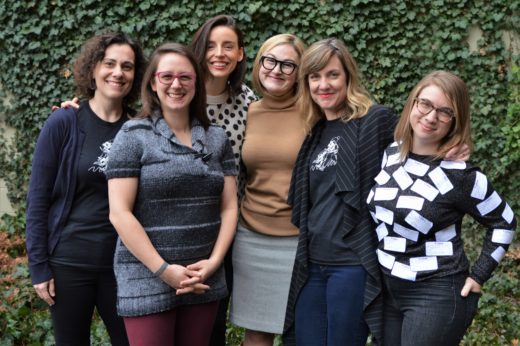
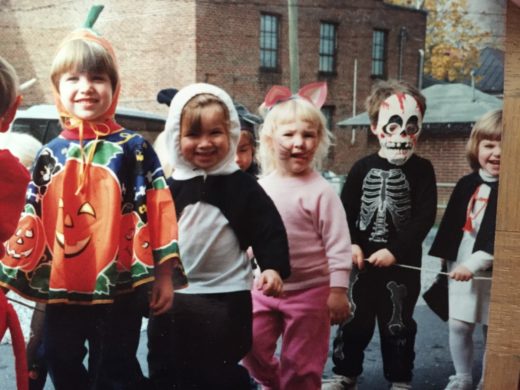
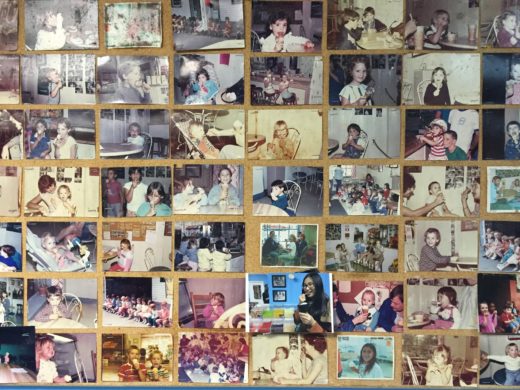
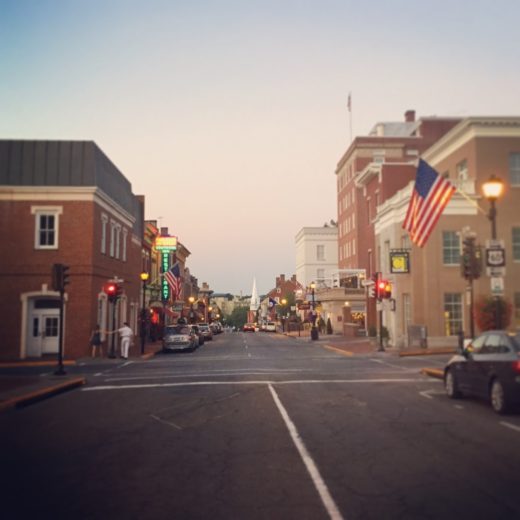
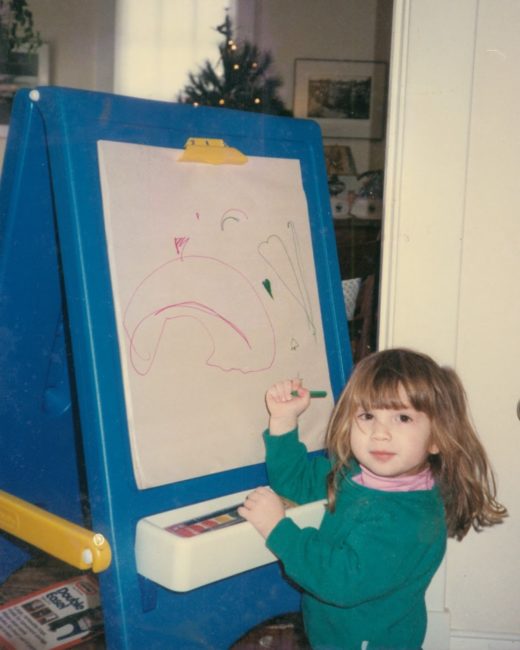
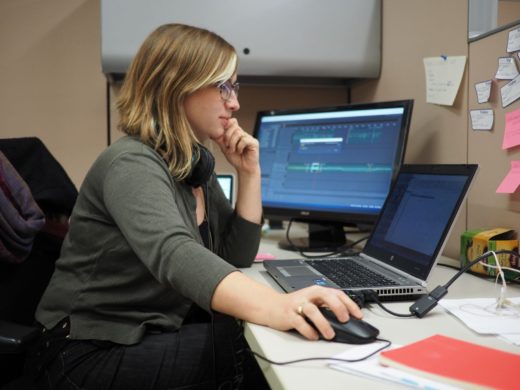
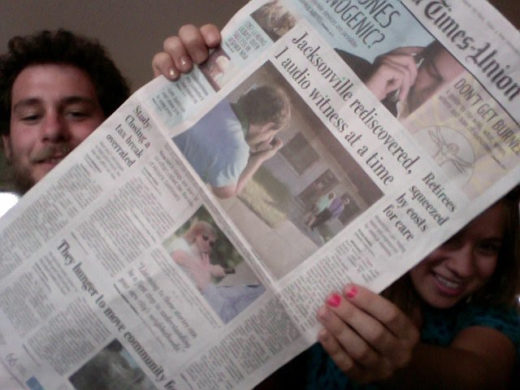
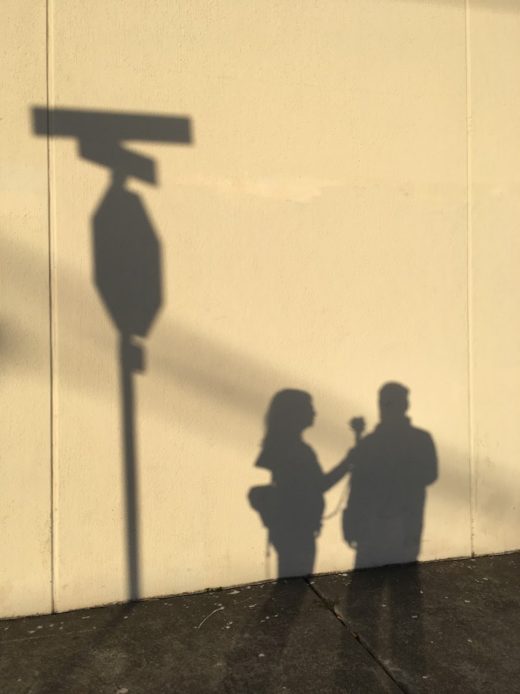
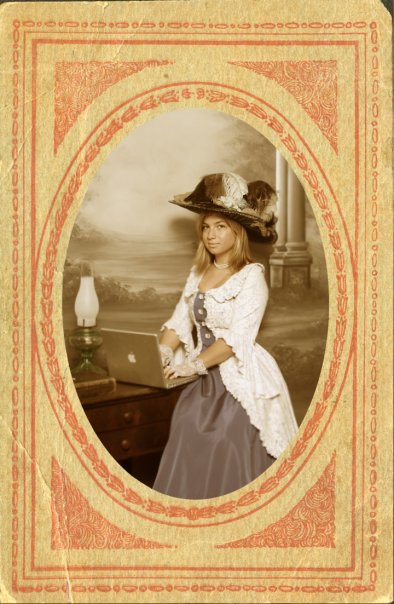

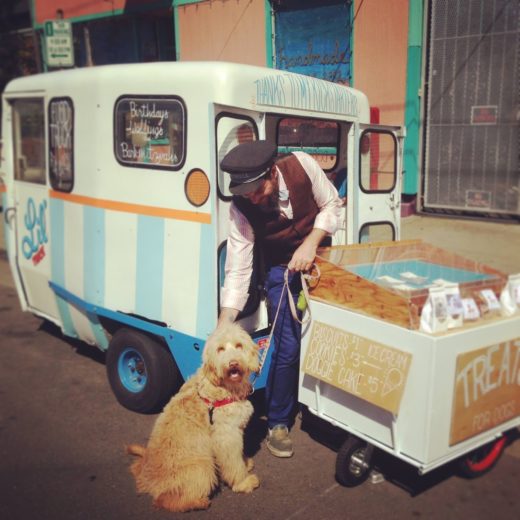








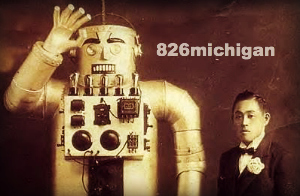



13 Comments
I’m likely going to get this wrong, but, after defeat, wasn’t Robert E. Lee very much against the flying of the Confederate flag?
I love “Believed.” Please pass along my thanks to everyone on the team at Michigan Radio.
I loved this interview so much. Thank you for the glimpse inside of Landline, and welcome back to Ypsilanti, Juliet.
Another quality interview, Mark.
I can’t wait to hear the bit about your uncle.
I follow him on Facebook and that stuff is off the wall.
I’ll have to listen to that one on really big speakers.
Nice interview,I dint read the whole thing..too long.., Remarkably, it seems to me Mayor Duggan trusts Trump and Trump trust Mayor Duggan. They don’t see eye to ey, at all, one being basically Santa Clause, a socialist at heart and the other pure capitalism incarnant, but both are religious men who like women and children.
so I am following Duggan on twitter and there he is playing that game in a corral and personally, that is a bad idea of a game, and schools shouldnt have those play corrals or let kids use them if they do.
though if there is anyone who cant take feed back its school administrators.
I did read the whole interview (it was terrific) and I don’t see any reference to Duggan.
What in the hell are you talking about, Maria?
Now let’s talk more about the possibility of an Ypsi audio tour.
I’m dying to hear from Maria how this interview with Juliet Hinely ties into Detroit’s Mayor Duggan.
hey, concerned reader, who are you? no lying now.
Don’t keep us all in suspense, Maria Huffman. Please, let us all in on this Juliet Hinely – Mike Duggan connection.
Nothing but liberal drivel from a bunch of unattractive, overweight feminists. Get a life…